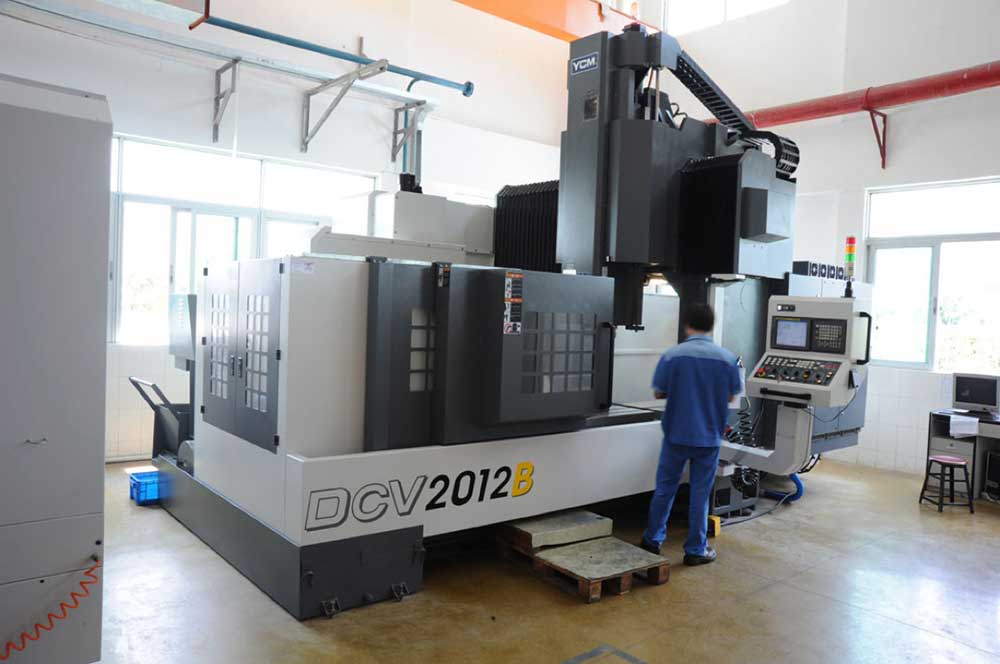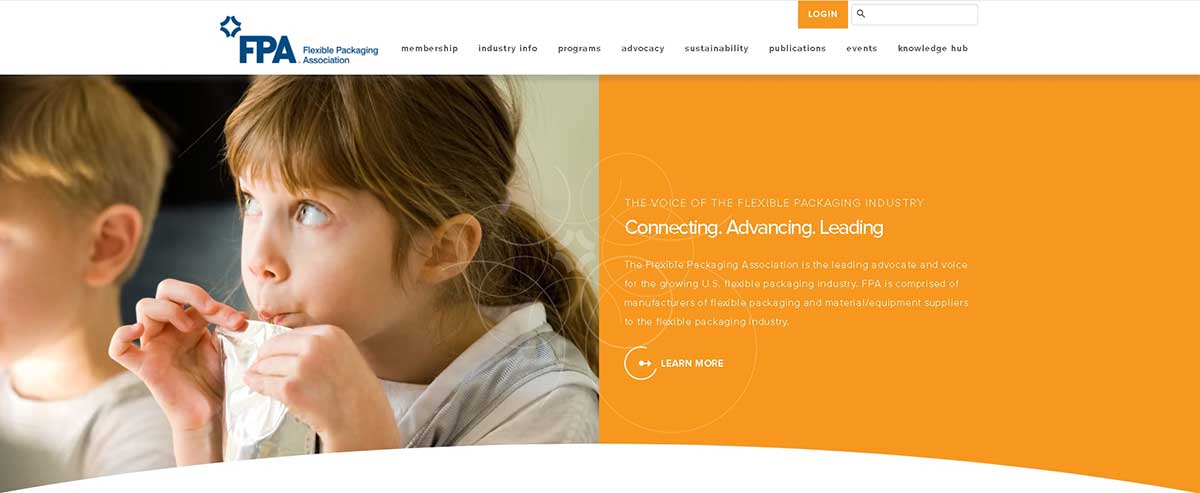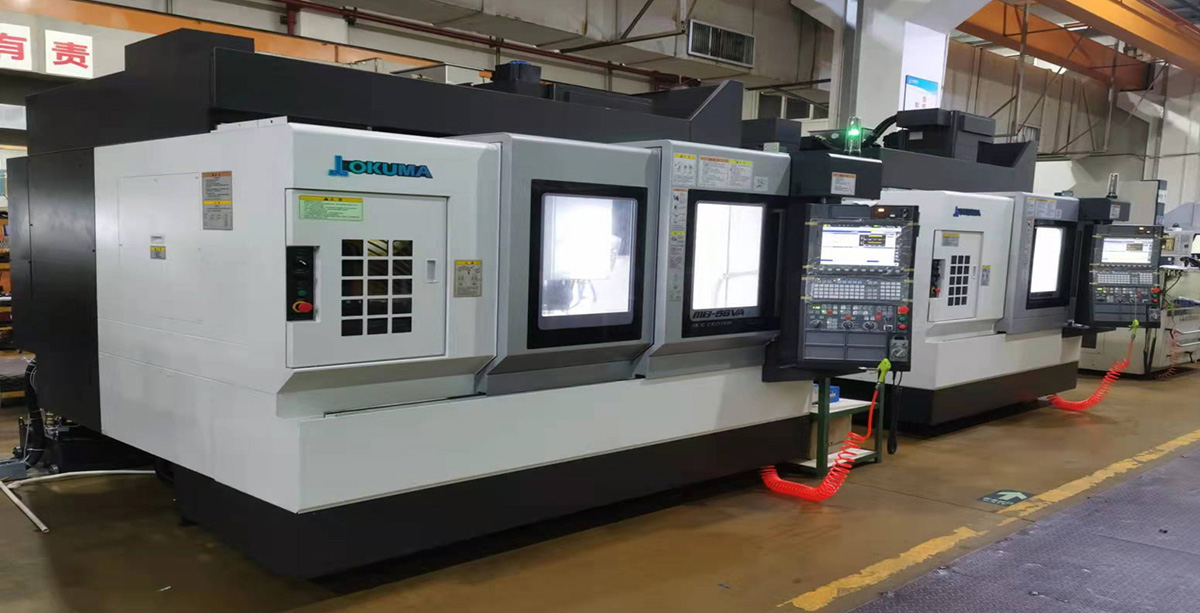Injection Molding Trends: What To Watch For In 2025
Introduction:
The injection molding industry is evolving at an unprecedented pace, driven by emerging technologies, shifting market demands, and an increased focus on environmental sustainability. As we approach 2026, understanding the future of injection molding is critical for manufacturers, suppliers, and industry stakeholders who want to remain competitive in this dynamic landscape. In this article, we explore the key trends set to redefine the industry, delve into technological innovations, and highlight real-world case studies that illustrate how these changes are already shaping manufacturing practices.
🔹 Key takeaway: The future of injection molding is not just about production—it’s about innovation, efficiency, and sustainability in a fast-changing global market.
Chapter 1: The Evolution of Injection Molding in the Packaging Sector
1.1 The Rise of the Packaging Industry
Packaging remains one of the most significant drivers of the future of injection molding. With global consumer markets expanding and e-commerce reaching new heights, the need for advanced, efficient, and sustainable packaging solutions has never been greater.
The Institute for Packaging and Processing Technologies (PMMI) reports that the global packaging industry was worth $42.2 billion in 2021. Several factors are driving this growth, demonstrating how the injection molding market is changing:

-
Population Growth & Increased Consumption:
• 🌟 Rising global population increases demand for packaged goods.
• 🌟 Enhanced packaging design drives consumer appeal. -
Sustainability Focus:
• 🌿 Adoption of biodegradable and recycled materials.
• 🌿 Eco-friendly production methods reducing waste. -
Technological Innovations:
• ⚙️ Smart packaging with integrated sensors and digital interfaces.
• ⚙️ Customization capabilities for niche markets.
🔸 Insight: The packaging sector’s robust growth is a prime example of the future of injection molding driving innovation across industries.
1.2 Impact on Injection Molding
Injection molding’s versatility makes it ideal for producing everything from large packaging components to intricate thin-wall containers and bottle molds. The process offers:
- High Efficiency: Rapid cycle times enable mass production.
- Customization: Flexible mold designs accommodate various shapes and sizes.
- Material Innovation: Use of advanced plastics and eco-friendly polymers.
🔹 Example: A leading European packaging manufacturer recently adopted new injection molding techniques that reduced material waste by 18% and increased production speed by 12%, illustrating the transformative potential of the future of injection molding.
Chapter 2: CNC Manufacturing & Precision Engineering in Injection Molding
2.1 Precision Through CNC Integration
The integration of CNC (Computer Numerical Control) machining into the injection molding process is revolutionizing mold design and production. CNC technology allows for:
- Higher Accuracy: Precise machining of molds minimizes errors.
- Faster Prototyping: Rapid creation of prototype molds accelerates time to market.
- Complex Geometries: Ability to produce intricate designs that meet rigorous specifications.
Benefits of CNC in Injection Molding:
- Enhanced Tolerance Levels: Achieving tighter tolerances for high-performance parts.
- Improved Efficiency: Automated processes reduce human error and boost consistency.
- Cost Reduction: Less scrap and lower rework rates lead to overall cost savings.
2.2 The Role of Simulation Software
Advanced simulation software has become indispensable in the future of injection molding. It allows engineers to:
- Visualize Mold Filling: Simulate the flow of molten material to predict potential issues.
- Optimize Cooling Channels: Ensure even temperature distribution for uniform part quality.
- Reduce Defects: Identify and rectify design flaws before production begins.
Case Study: A North American automotive supplier implemented simulation software to optimize their mold design, resulting in a 20% reduction in cycle time and a 15% decrease in defect rates.
Chapter 3: Asia-Pacific’s Dominance and Its Implications
3.1 Market Dynamics in Asia-Pacific
The Asia-Pacific region is set to lead the global injection molding market, significantly influencing the future of injection molding through:
- Rapid Economic Growth: Countries like China, India, Japan, and South Korea are major contributors.
- Expanding Consumer Markets: Increased disposable income drives demand for quality products.
- Government Initiatives: Policies promoting manufacturing innovation and sustainability.
Regional Highlights:
- China: Expected to maintain a robust CAGR of approximately 6.8% in the packaging segment.
- India: Significant investments in infrastructure and residential construction are driving demand.
- Japan: Leading in technological advancements, particularly in electronics and automotive sectors.
🔹 Chart Example: Asia-Pacific Injection Molding Market Share (2021-2025)
| Country | Market Share (%) |
|---|---|
| China | 45 |
| India | 20 |
| Japan | 15 |
| South Korea | 10 |
| Others | 10 |
3.2 Implications for Global Manufacturers
Global manufacturers must adapt to the future of injection molding by:
- Shifting Supply Chains: Establishing production bases in Asia-Pacific for cost efficiency.
- Leveraging Local Expertise: Collaborating with regional experts to adopt best practices.
- Enhancing Innovation: Investing in R&D to keep pace with technological advancements.
🔸 Insight: As Asia-Pacific leads the charge, manufacturers worldwide must embrace change to remain competitive.

Chapter 4: Automation & Robotics in the Future of Injection Molding
4.1 The Automation Revolution
Automation is a cornerstone of the future of injection molding. Manufacturers are increasingly deploying robotics and automated systems to streamline production processes, resulting in:
- Increased Productivity: Robots work faster and more consistently than manual labor.
- Enhanced Quality Control: Automated inspections reduce the risk of human error.
- Lower Operating Costs: Automation reduces labor expenses and minimizes downtime.
Key Automation Technologies:
- Robotic Arm Systems: For handling parts, assembly, and packaging.
- Automated Quality Inspection: Using high-resolution cameras and sensors to detect defects.
- Integrated Material Handling: Automated logistics systems improve overall workflow.
🔹 Example: A European automotive parts manufacturer integrated robotics into its production line, cutting cycle times by 25% and reducing production costs by 18%—a clear testament to the future of injection molding.
4.2 The Impact of Industry 4.0
Industry 4.0 is transforming manufacturing, and injection molding is no exception. Digitalization, smart factories, and real-time data analytics are key elements driving:
- Predictive Maintenance: Sensors monitor equipment health to prevent breakdowns.
- Real-Time Process Optimization: Data analytics allow for continuous improvement in cycle times and quality.
- Enhanced Connectivity: Machines and systems communicate seamlessly, facilitating rapid response to production changes.
Chapter 5: Emerging Materials and Sustainable Practices
5.1 Innovations in Material Science
One of the most exciting aspects of the future of injection molding is the advent of new materials that are both high-performing and sustainable. Manufacturers are exploring:
- Bio-based Plastics: Derived from renewable sources, these materials offer reduced carbon footprints.
- Recycled Polymers: Utilizing post-consumer waste to create high-quality injection molded parts.
- Advanced Composites: Combining polymers with fibers or fillers to enhance strength and durability.
Material Comparison Table
| Material | Key Benefits | Application |
|---|---|---|
| Bio-based Plastics | Renewable, lower carbon footprint | Packaging, consumer products |
| Recycled Polymers | Eco-friendly, cost-effective | Automotive components, household items |
| Advanced Composites | High strength, improved durability | Aerospace, high-performance automotive |
🔹 Note: Embracing these innovative materials is a critical element in the future of injection molding, enabling manufacturers to meet both performance and environmental goals.
5.2 Sustainable Manufacturing Practices
Sustainability is not just a buzzword—it’s a necessity. Manufacturers are incorporating eco-friendly practices into their production processes, such as:
- Energy-Efficient Machinery: Reducing energy consumption during production.
- Waste Minimization Techniques: Optimizing material usage to reduce scrap.
- Closed-Loop Recycling: Reintegrating waste materials back into the production cycle.
Case Study: A major European packaging company implemented a closed-loop recycling system in its injection molding process, cutting waste by 30% and reducing overall energy usage by 15%.
Chapter 6: Digitalization and Smart Manufacturing
6.1 Digital Transformation in Injection Molding
The integration of digital technologies is revolutionizing the future of injection molding. Manufacturers are using advanced digital tools to:
- Monitor Processes in Real Time: Sensors and IoT devices track every aspect of production.
- Utilize Predictive Analytics: Data-driven insights predict equipment failures before they occur.
- Enhance Mold Design: Simulation software and AI optimize mold design and reduce trial-and-error.
Key Digital Technologies:
- IoT Sensors: Provide real-time feedback on process parameters.
- AI & Machine Learning: Optimize production settings for improved efficiency.
- Cloud-Based Platforms: Allow remote monitoring and data analysis.
6.2 Benefits of Digitalization
Digitalization brings numerous benefits to the injection molding process, including:
- Improved Efficiency: Automation and real-time data analytics reduce cycle times.
- Reduced Downtime: Predictive maintenance minimizes unexpected breakdowns.
- Enhanced Quality: Continuous monitoring leads to fewer defects and higher consistency.
- Cost Savings: Efficient processes lower overall production costs.
🔹 Example: A global electronics manufacturer reported a 20% improvement in production efficiency after implementing digital monitoring systems in their injection molding operations.
Chapter 7: Future Market Projections and Industry Insights
7.1 Market Growth and Projections
As the future of injection molding unfolds, market forecasts indicate significant growth driven by factors such as:
- Increasing Global Demand: Expanded consumer markets and industrial applications.
- Technological Advancements: Continued improvements in automation and digital tools.
- Sustainable Practices: Growing emphasis on eco-friendly manufacturing.
🔸 Insight: Robust market growth underscores the critical role the future of injection molding plays in shaping manufacturing landscapes globally.
7.2 Industry Challenges and Opportunities
While the prospects are promising, manufacturers must also navigate several challenges:
- Supply Chain Disruptions: Global events can impact raw material availability.
- Cost Pressures: Balancing high-quality production with competitive pricing.
- Technological Integration: Investing in and adopting new technologies requires significant capital.
- Regulatory Compliance: Meeting evolving environmental and safety standards.
Opportunities for Manufacturers:
- Innovation in Materials: Embracing bio-based and recycled materials to meet sustainability goals.
- Expansion into New Markets: Leveraging growth in Asia-Pacific and emerging economies.
- Enhanced Production Capabilities: Integrating automation and digitalization for efficiency gains.
As a leader in the global retail industry, the United States houses five of the top 10 largest retail companies worldwide. The Flexible Packaging Association of the United States notes that flexible packaging claims a substantial share in the nation, accounting for roughly 20% of the total packaging market.

In addition to retail, the food and beverage sector in the U.S. is also experiencing significant growth. The aftermath of the COVID-19 pandemic saw a surge in restaurant takeaways and consumerism in packaged food and beverages.
Chapter 8: Expert Interviews and Perspectives
8.1 Insights from Industry Leaders
To better understand the future of injection molding, we reached out to experts in the field. Here are some insights from leading industry professionals:
-
Dr. Emily Chen, Material Scientist:
“The introduction of bio-based plastics and recycled polymers is set to revolutionize the injection molding process, reducing environmental impact while maintaining high performance.” -
John Martinez, Automation Specialist:
“Automation and digitalization are not just trends; they are transforming the entire manufacturing process. The integration of AI and IoT in injection molding is a game changer.” -
Linda Zhao, Industry Analyst:
“Asia-Pacific’s dominance in the injection molding market is clear. Manufacturers who adapt to regional trends will drive innovation and set new industry standards.”
🔸 These expert perspectives highlight the dynamic nature of the future of injection molding and underscore the importance of continuous innovation.
8.2 Panel Discussion Highlights
In a recent panel discussion, industry experts debated the future challenges and opportunities in injection molding. Key discussion points included:
- Adoption of Industry 4.0: How digital transformation is accelerating productivity.
- Sustainability Goals: Strategies for reducing waste and lowering carbon footprints.
- Global Market Dynamics: The shifting landscape of supply chains and emerging markets.
Chapter 9: Future Challenges and Opportunities
9.1 Overcoming Production Hurdles
As the future of injection molding becomes more digitized and automated, manufacturers must address several challenges:
- Integration Costs: High initial investments in digital and automation technology.
- Skilled Labor Shortages: The need for specialized training to operate advanced systems.
- Cybersecurity Risks: Protecting connected manufacturing systems from cyber threats.
Strategies to Overcome Challenges:
- Investment in Training: Upskilling employees to manage new technologies.
- Partnerships with Tech Providers: Collaborating with experts to integrate cutting-edge solutions.
- Robust Security Protocols: Implementing cybersecurity measures to safeguard digital assets.
🔸 Tip: Companies that proactively tackle these hurdles will thrive in the evolving landscape of the future of injection molding.
9.2 Seizing New Opportunities
Opportunities in the injection molding industry are abundant, particularly for those who embrace change:
- Green Manufacturing: Capitalize on the growing demand for sustainable production methods.
- Customization & Personalization: Offer tailored solutions to niche markets.
- Global Expansion: Explore emerging markets in Asia-Pacific and beyond.
🔹 Note: The future of injection molding offers a wealth of opportunities for innovators and early adopters alike.
Chapter 10: Case Studies: Success Stories in Injection Molding Transformation
10.1 Automotive Industry Transformation
A renowned automotive parts manufacturer recently re-engineered its production process by integrating digital simulation and automation. As a result:
- Cycle times decreased by 18%.
- Defect rates dropped by 22%.
- Production capacity increased significantly.
🔸 Case Insight: This transformation is a prime example of the future of injection molding driving operational excellence.
10.2 Packaging Industry Innovations
Another leading packaging company adopted sustainable materials and advanced CNC machining to revolutionize its injection molding process. Outcomes included:
- Reduction in material waste by 25%.
- Energy consumption reduced by 15%.
- Enhanced product customization options for clients.
🔹 Case Insight: Embracing these innovations positions the company as a leader in the future of injection molding.
10.3 Electronics and Consumer Goods
A global electronics supplier integrated IoT sensors and real-time monitoring into their injection molding process, achieving:
- Improved product consistency and quality control.
- Predictive maintenance, leading to 20% fewer machine downtimes.
- Overall cost savings of 10% in production.
🔸 These case studies demonstrate how the future of injection molding is not only feasible but is already yielding significant benefits across diverse industries.
Conclusion: Embrace the Future of Injection Molding
The future of injection molding is bright and filled with promise. As we approach 2026and beyond, the convergence of automation, digitalization, sustainable materials, and global market shifts will redefine manufacturing landscapes. Businesses that adapt to these trends will benefit from enhanced efficiency, reduced costs, and superior product quality.
At Huazhi Technology, we are committed to driving innovation in injection molding. With decades of experience and a relentless focus on quality, we provide comprehensive solutions tailored to meet the evolving needs of our clients. We invite you to join us in embracing the future of injection molding and to leverage our expertise for your next project.
Contact Us Today!
Ready to transform your manufacturing process? Contact us today to discover how our cutting-edge injection molding solutions can help you stay ahead of the competition. Our team of experts is ready to provide personalized guidance and support for your next breakthrough project.
FAQs on the Future of Injection Molding
Q1: What key trends will shape the future of injection molding in 2025?
A: Trends include automation and robotics, digitalization, sustainable materials, CNC precision, and the rapid growth of the packaging and automotive sectors.
Q2: How will digitalization impact injection molding processes?
A: Digital tools such as IoT sensors, AI analytics, and predictive maintenance systems will enhance process efficiency, reduce downtime, and improve product quality.
Q3: What emerging materials are influencing the future of injection molding?
A: Bio-based plastics, recycled polymers, and advanced composites are leading the way in sustainable and high-performance injection molding.
Q4: How are automation and robotics transforming injection molding?
A: Automation streamlines production, increases accuracy, reduces labor costs, and ensures consistent product quality by integrating robotics in material handling, inspection, and packaging.
Q5: What role does sustainability play in the future of injection molding?
A: Sustainability is paramount, driving manufacturers to adopt eco-friendly practices, reduce waste, and utilize renewable materials in production processes.
Q6: How can companies prepare for the future of injection molding?
A: By investing in advanced technology, embracing digitalization, adopting sustainable practices, and continuously training staff on emerging manufacturing techniques.

